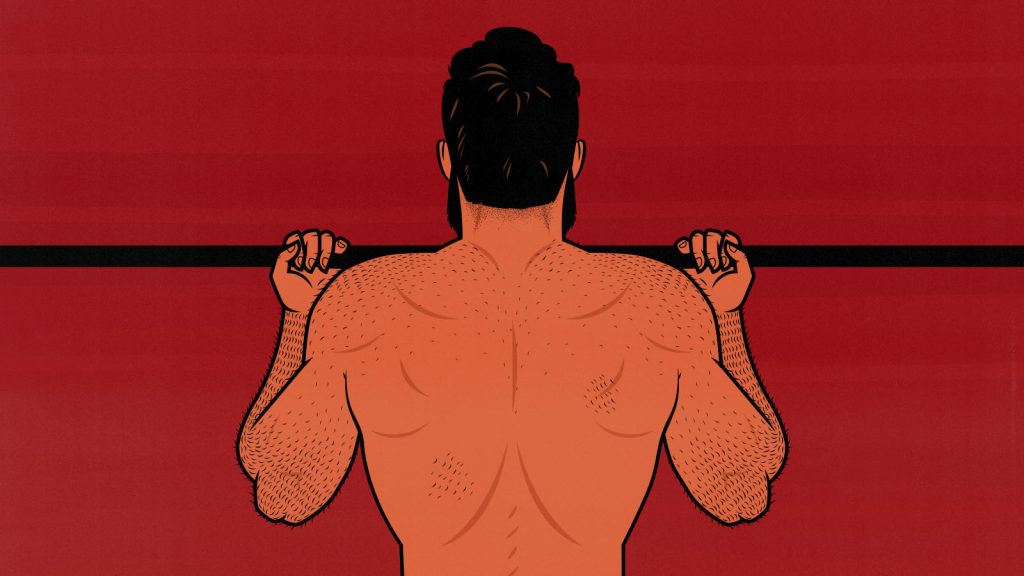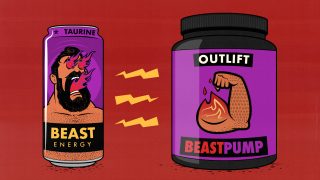
What Does AMRAP Mean? Techniques & Benefits Explained
AMRAP means As Many Reps/Rounds As Possible. It’s useful when you don’t have full control over how much weight you’re lifting (like with bodyweight exercises) or how intense your cardio is (like when doing circuits).
It’s a powerful way of programming workouts. It means we can program bodyweight exercises without knowing exactly how many reps you can get. It’s one of the only good ways to program bodyweight exercises.
It’s also a good way to see if the workout you’re following is any good. If you see “push-ups: 3 sets of 10 reps” or “crunches: 2 sets of 15 reps,” then you know your workout routine isn’t very good. Those should be AMRAP sets. You should do as many reps as you can. That’s the only way to guarantee you’re working your muscles hard enough to provoke an adaptation.
For Gaining Muscle & Strength
If you’re trying to gain muscle or strength, AMRAP almost always stands for As Many Reps As Possible. When you’re lifting weights, you choose a weight that’s challenging for a given number of reps. But when you’re doing a bodyweight exercise, you have less control over how much weight you’re lifting, so it’s usually more helpful to do as many reps as possible.
For example, let’s say you’re doing push-ups. You can make push-ups easier by doing them from your knees or raising your hands on a bench. You can make them harder by doing deficit push-ups or raising your feet. Whatever variation you’re doing, you have to challenge your muscles, so do as many reps as you can. Next workout, try to do more.
That’s what AMRAP is all about—it’s about striving for more reps instead of striving to lift heavier weights. It’s equally effective for building muscle, as long as you can do between 4–30 reps (more on that here). If you can’t get 4 reps, try an easier variation. If you can do more than 30, try a harder variation.
Reps in Reserve
You don’t need to take AMRAP sets all the way to muscle failure. You can stop 0–4 reps shy of failure and still get great results. For example, if you’re doing push-ups, then it’s important to keep going until your muscles are challenged, but you don’t need to fail the last rep. You could stop a rep shy of failure.
For Supersets
You can also use AMRAP sets in supersets. Let’s say your workout has biceps curls and triceps extensions. You can superset those exercises together by choosing a weight for biceps curls and then using that same weight for triceps extensions, doing as many reps as you can:
- Set 1 of biceps curls (8–12 reps)
- Set 1 of triceps extensions (AMRAP)
- Rest for 30 seconds
- Set 2 of biceps curls (8–12 reps)
- Set 2 of triceps extensions (AMRAP)
When you superset the exercises together, you can get twice as much work done in the same amount of time. Supersets stimulate just as much muscle growth as straight sets, so there’s no disadvantage. It will also keep your heart rate higher, which is good for improving your general fitness.
By using the same weight, you cut down on the amount of equipment you need. It means you can do supersets at home with a single barbell or pair of dumbbells. It means you can do them in a crowded gym without hogging too many weights.
For Getting Fitter
If you’re doing a general fitness workout, AMRAP means As Many Rounds As Possible. Maybe you’re supposed to do circuits of push-ups, rows, and goblet squats for 15 reps each. When you finish that circuit, you can do another, then another—as many rounds as you can.
AMRAP circuits are especially common in group fitness classes, but Marco has also used them with college, professional, and Olympic athletes.
Alright, that’s it for now.






Hi Shane,
nice little article. What about the heavy hitters among the bodyweight exercises like chin ups, pull ups, dips, pistol squats? In my opinion better to stop before failure in the most sets.
Best Regards
Thanks, Sebastian!
You don’t need to go to failure when doing AMRAP. You could stop a rep or three shy, yeah.
With exercises like heavy deadlifts, you don’t really ever need to go to failure. With chin-ups, pull-ups, dips, and pistol squats, there are times when it could help. For example, if you aren’t doing that many sets, it helps to push harder, and it’s safe to push harder on those exercises.
Chin-ups and pull-ups are relatively easy at the bottom of the range of motion, so you could even go PAST failure if you wanted, doing just the bottom portion. If you’re already doing plenty of back work, you don’t need to. If you’re trying to improve your technique, it might help to stop while your reps are still nice and clean. But there are times when it can help.
Thank you shane. That’s interesting. I agree on Deadlifts. A failed rep on a heavy set feels like been hit by a bus afterwards.